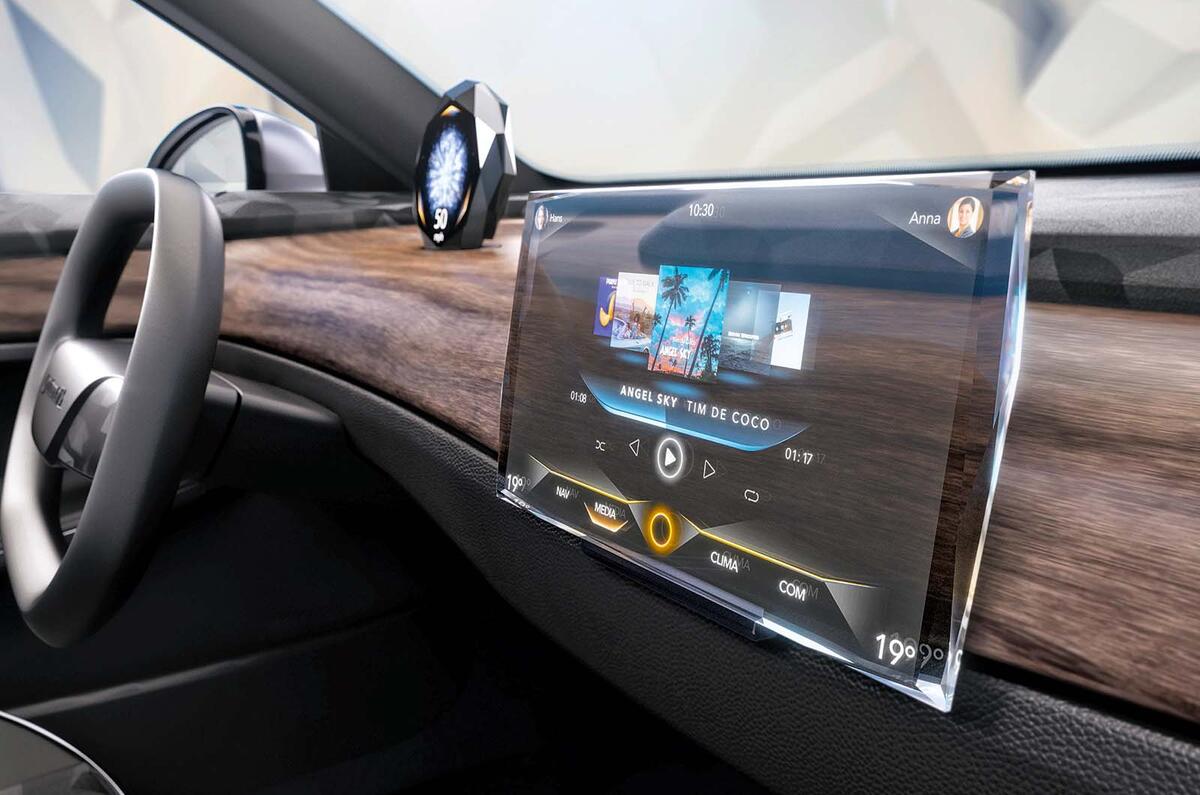Touchscreens are one of the most controversial subjects in the car world, but manufacturers are still planning bigger and flashier versions of them, especially for higher-end models.
An example being touted by Continental, developed in conjunction with Swarovski Mobility (yes, as in the jewellery shop), is the Crystal Center Display, which will give “unprecedented levels of brightness”, thanks to micro-LED (light-emitting diode) tech.
It’s just a concept today, but it gives an idea of just how far display technology can be pushed in the future. The crystal surface itself is three-dimensional, with facets created using special grinding techniques similar to those used to cut glass.
The high-tech part is the use of micro-LEDs to generate an image that appears to be floating inside the crystal, so it’s possible to see both through the screen and through the image to whatever is behind it.
Continental says the design is just intended to show off the capabilities of the hardware by combining it with an interface that the development team imagines it could have.
In production, the display could be adapted to an individual customer’s human-machine interface, including touchscreen functions on the surface of the crystal display.
The floating visuals also lend themselves to “deep integration” of AI-powered assistants, and it’s not hard to imagine interacting with a holographic humanoid, rather than the spinning blob that introduces Apple’s Siri.
Micro-LED technology generally drew a lot of attention at the CES tech show this year. Samsung, which has been touting micro-LED tech for some years now, showed an ultra-bright, high-definition transparent TV screen.
It’s easy to imagine how designers might find plenty of ways to exploit that attribute in car interiors in the future, whether it be for entertainment in the rear seats, instrumentation or a head-up display within the windscreen, rather than projected onto it.
Micro-LED screens differ from existing LED screens in that the diodes emit coloured light directly to form an image, rather than working as backlights behind LCD filters that actually create the image.
Micro-LEDs really are micro, by the way: they measure mere microns across and there are three of them for every pixel comprising the image.
OLED tech is similar to micro-LED tech in that the LEDs themselves make the images. But because the light-emitting component of an OLED is made from organic molecules (hence the ‘O’ in the name), they can ultimately degrade, whereas micro-LEDs won’t.





Join the debate
Add your comment
I suppose this is the future for all of us,it has to be,we can't just settle on what's best just now,it will be a couple of decades before it's prevalent, other areas must be looking at this tech.